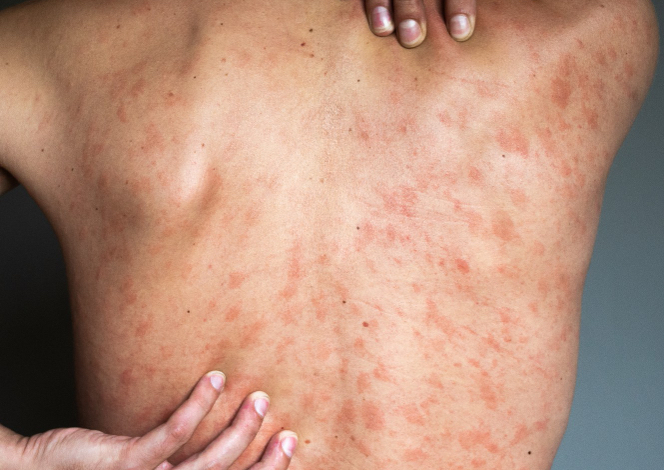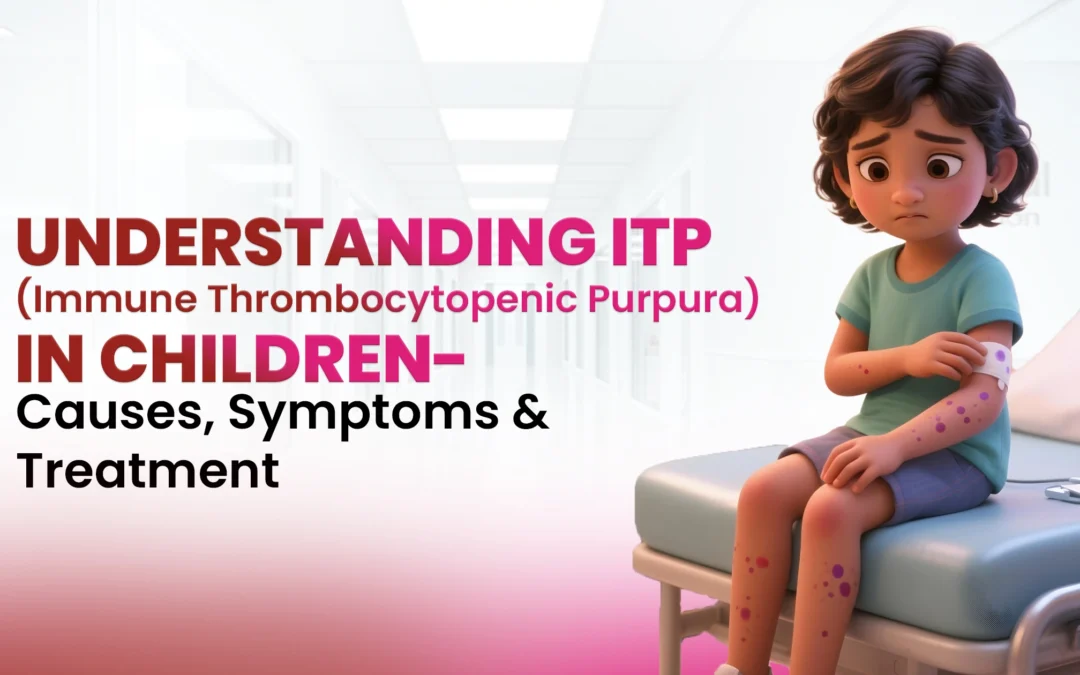When parents hear that their child’s platelets have dropped drastically — sometimes below 20,000 — it can be deeply alarming. Many immediately associate it with serious illnesses like cancer or leukemia.
But in a majority of these cases, the real cause is ITP — Immune Thrombocytopenic Purpura, a condition where the child’s immune system itself attacks the platelets.
As a Pediatric Hematologist, I often reassure families that ITP is usually a benign, treatable, and often temporary condition — but one that must be carefully monitored and managed.
1. What Is ITP?
Immune Thrombocytopenic Purpura (ITP) is an autoimmune blood disorder in which the child’s immune system mistakenly identifies platelets as harmful and destroys them.
- Platelets are responsible for blood clotting and preventing bleeding.
- In ITP, the bone marrow continues to make platelets normally, but the body destroys them faster than they can be replaced.
- The platelet count usually falls below 100,000 per microliter, and in severe cases, even below 10,000.

2. What Causes ITP in Children?
The exact cause isn’t always clear, but several triggers have been identified:
✅ Viral Infections:
Often develops 1–3 weeks after common viral infections like measles, mumps, chickenpox, or even a simple cold.
✅ Post-Vaccination Response:
In rare cases, certain vaccines can temporarily trigger ITP-like reactions.
✅ Autoimmune Tendency:
In some children, genetic or immune-related predisposition causes the body to target platelets mistakenly.
ITP is not contagious and doesn’t usually mean a child has cancer or a serious bone marrow disease.
3. Symptoms of ITP in Children
Symptoms depend on how low the platelet count is:
- Tiny red or purple spots on the skin (petechiae)
- Larger purplish bruises (purpura) without trauma
- Frequent nosebleeds or bleeding gums
- Prolonged bleeding from small cuts
- Fatigue due to chronic blood loss
- In very severe cases, blood in urine or stool
Many children with mild ITP appear completely healthy and active despite low platelet counts.
4. How Is ITP Diagnosed?
Diagnosis involves a detailed clinical evaluation and blood tests:
- Complete Blood Count (CBC): Confirms low platelets.
- Peripheral Smear: Ensures other blood cells are normal.
- Bone Marrow Examination (if needed): To rule out leukemia or marrow disorders.
- Autoimmune and Viral Screening: Identifies possible triggers.
The goal is to confirm immune-mediated platelet destruction and exclude other serious causes.
5. Treatment of ITP in Children
Treatment depends on the severity of bleeding rather than the exact platelet count.
✅ Observation Only:
- Many cases (especially after viral infections) resolve spontaneously.
- If the child is active and bleeding is minimal, only close monitoring is required.
✅ Medications:
- Steroids: Help suppress immune destruction of platelets.
- IVIG (Intravenous Immunoglobulin): Rapidly boosts platelet count in moderate to severe cases.
- Anti-D Immunoglobulin: Used selectively in specific cases.
✅ Second-Line Treatments (for chronic ITP):
- Rituximab or thrombopoietin receptor agonists may be used if the condition persists beyond 6–12 months.
✅ Rarely Surgery (Splenectomy):
Considered in resistant, chronic ITP cases — very uncommon in children.
6. Long-Term Outlook & Prognosis
- 80–90% of children recover fully within 6 months.
- Some develop chronic ITP, but even then, platelet counts are often stable enough to lead a normal life.
- Regular follow-ups with a pediatric hematologist are crucial to monitor platelet trends and adjust treatment.
7. What Parents Should Know
- ITP is usually temporary and treatable.
- Children can attend school and live normally with precautions (avoid contact sports until platelets stabilize).
- Always report new bruises or bleeding to the doctor immediately.
- Never self-medicate or give unprescribed drugs like aspirin, which can worsen bleeding.
Conclusion

A diagnosis of ITP may sound frightening, but in most cases, it’s a self-limiting and fully manageable condition.
With timely diagnosis, expert care, and regular monitoring, children recover beautifully — regaining normal platelet levels and full vitality.
If your child has been diagnosed with ITP or a persistently low platelet count, consult a Pediatric Hemato-Oncologist for accurate guidance and personalized care.

